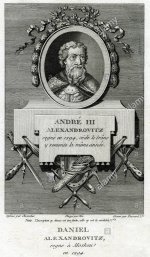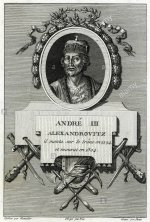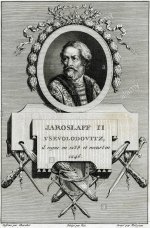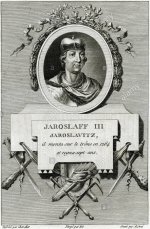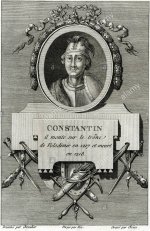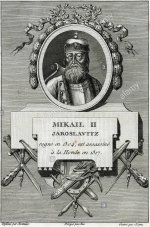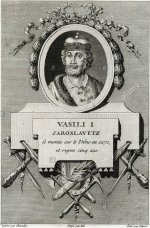Came across a few images of the Russian tsars, czars, rulers or whatever you wanna call these individuals. I am not sure I understand at what point they were counted like that, for we appear to know certain individuals as:
Why do we have Alexander Nevsky (1221-1263) as Alexander I, and I think Alexander of Tver (1301-1339) as Alexander II?




Below we have a few additional images. They do not necessarily pertain to the enumeration issue, but still appear to be rather interesting.
KD: I was unable to locate the original source of these depictions. As you can see, all of them came from Alamy. The images had to come from some book, methinks, but I have no idea what that book could be.
Why do we have Alexander Nevsky (1221-1263) as Alexander I, and I think Alexander of Tver (1301-1339) as Alexander II?
- Per wikipedia, Alexander of Tver was #I of Tver, and #II of Vladimir-Suzdal.
- Dmitry I - Dmitry of Pereslavl (1250-1294) - when did this guy become #I?
- Michael I - Mikhail Fyodorovich Romanov (1596-1645) - Michael of Russia - enumeration is not an issue here, for he is mentioned as Michail I
- But what's up with his looks? Was he some Tartarian khan?
Below we have a few additional images. They do not necessarily pertain to the enumeration issue, but still appear to be rather interesting.
KD: I was unable to locate the original source of these depictions. As you can see, all of them came from Alamy. The images had to come from some book, methinks, but I have no idea what that book could be.
- If at some point Alexander Nevsky and Alexander of Tver were considered to be Alexander I and Alexander II, why were they stripped of the enumeration in favor of Alexander I and Alexander II.
- Why did they draw Mikhail Fyodorovich Romanov wearing a turban?
- What book did these images come from?
- What year were these images made?
- Who produced these depictions?


